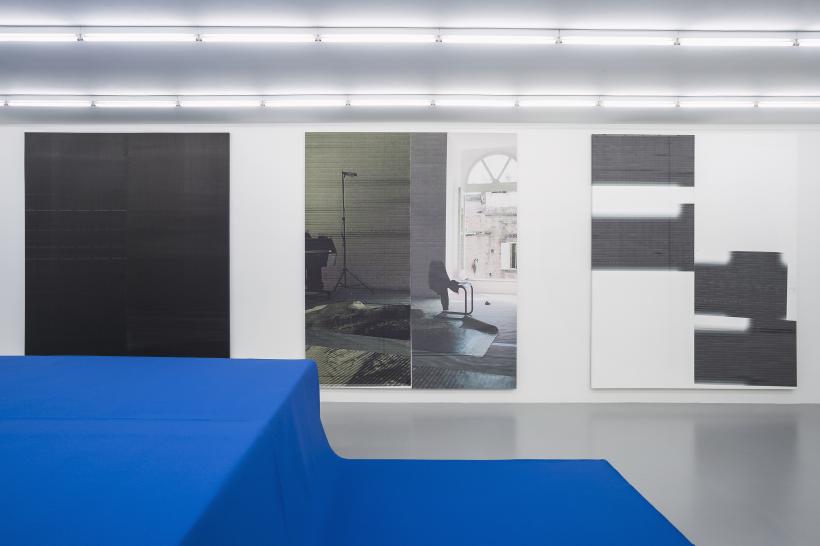Wade Guyton: Siamo arrivati, in forma abbreviata
Gió Marconi
4 November - 22 December, 2017
Review by Marialuisa Pastò
iPhones, cameras, computers, consumer-grade Epson printers… American artist Wade Guyton’s practice surrounds the digital universe of our daily lives. Guyton’s process-based approach consists of an apparently simple method, focused on an authorial use of technology. The limitations of a large-format Epson UltraChrome inkjet printer create stutters and miss-fires on his large-scale canvases challenging the notions of painting and photography.
‘Siamo arrivati, in forma abbreviata’ is Guyton’s third solo exhibition at Giò Marconi and in it, Guyton presents a body of work that had been destined to show at the Madre Museum in Naples, which he used as a studio two months prior to the exhibition. A t the end of the exhibition, the ten largest works could not fit through the doors of the museum and needed to be un-stretched and rolled up. They were transported to Giò Marconi and re-stretched and now, having been re-staged, constitute a concentrated experience of the original installation.
The title references a slogan used by McDonald’s for the opening of its new stores in Naples and the imagery in his works is derived from the Madre Museum, the temporary wi-fi routers installed on the walls, a night view of the street where he lived and a page of the online edition of ‘Il Mattino’, an Italian daily newspaper, whose logos and advertising graphics recall the visual identities of consumer culture referenced in the works of Andy Warhol and Michel Majerus.
At the same time, the works are in a constant dialogue with architecture of the gallery rooting them to the present as well as activating their malleability. This is helped by the main gallery space, which is dominated by a large installation where a blue sheet is erected in the centre of the room. On it are work tools that reference Guyton’s transformation of the Madre Museum from a place of spectatorship to a place of production.
Unexpected overlaps caused by diminishing levels of ink tone and technical glitches corrupt the structure of the images further blurring the line between identity and reproducibility, the works are a delicate balance between photography and painting and these inconsistencies become a language that explores the boundaries of the ‘intentional error’ as a creative result.
In doing so, topics such as representation and abstraction, singularity and multiplicity flow into each other seamlessly, again, this is aided by the fact that these works have been re-staged and re-contextualized by a new interpretation and a new environment. We live in a time where we value and experience visual imagery and hold it in highest regard as a form of communication in an extremely accelerated manner yet at the same time it has become more and more dispensable and recyclable.
What Guyton highlights throughout this exhibition is how technology, in this way, becomes just the hook that stages how reality is connected to the way digital language shapes our awareness of reality that will always be fixed within the parameters of viewer’s perception.











